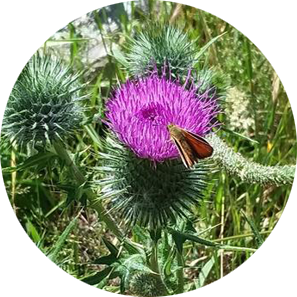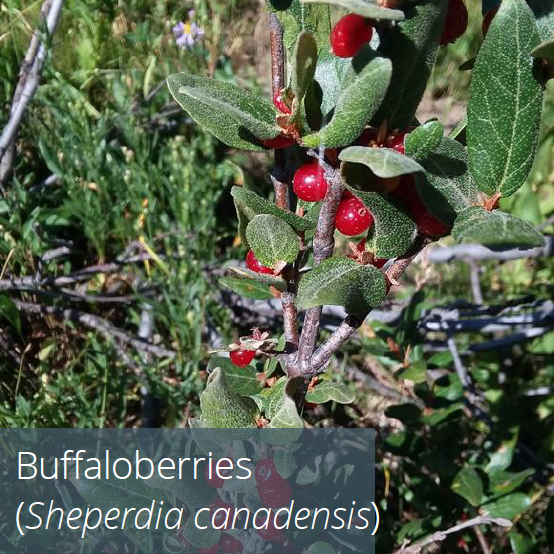#TrailTalk
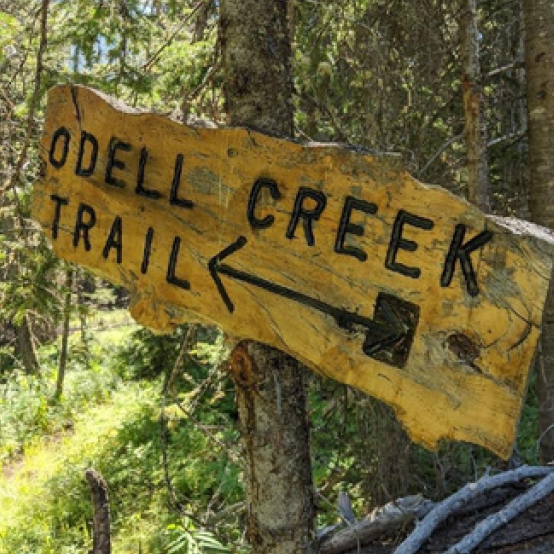 This summer we created #TrailTalkTuesdays as a way of bringing Centennial Valley to
you, while our doors remain closed to visitors. Our most recent Trail Talk on Instagram
featured the Odell Creek Trail. As you may have guessed, this trail runs along Odell
Creek. It travels through mixed conifer forests and stands of water-loving trees like
aspens, cottonwoods and willows. There is no specific end destination on this trail;
you can follow it all the way into Idaho, use it as an access to Big Sheep mountain,
or just wander to a nice picnic spot.
This summer we created #TrailTalkTuesdays as a way of bringing Centennial Valley to
you, while our doors remain closed to visitors. Our most recent Trail Talk on Instagram
featured the Odell Creek Trail. As you may have guessed, this trail runs along Odell
Creek. It travels through mixed conifer forests and stands of water-loving trees like
aspens, cottonwoods and willows. There is no specific end destination on this trail;
you can follow it all the way into Idaho, use it as an access to Big Sheep mountain,
or just wander to a nice picnic spot.
The Odell Creek fault line runs north-south below Odell Creek. This fault divides the Centennial range. The mountains to the east of the fault experience greater uplift, lending to steeper faces and older exposed rock. There is a 300 million year difference between the ages of the rocks exposed on either side of this fault. Those on Big Sheep Mountain are from ancient ocean deposits (Madison limestone) about 350 million years old, while to the west, the top of Mt. Baldy contains 50 million year old rock.
Peak wildflower season may be over, but the Odell Creek trail remains abloom. You may still spot some mid-summer flowers, like the Purple Monkeyflower (Mimulus lewisii) and Fireweed (Chamerion angustifolium). Meanwhile, late bloomers such as the Western Coneflower (Rudbeckia occidentalis) and Goldenrod (Solidago spp) signal that summer is coming to an end.
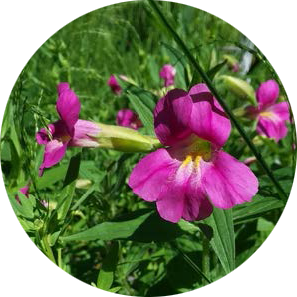
Purple Monkeyflower
(Mimulus lewisii)
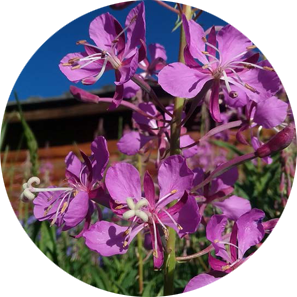
Fireweed
(Chamerion angustifolium)
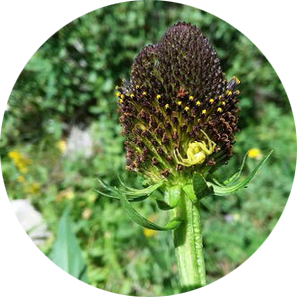
Western Coneflower
(Rudbeckia occidentalis)
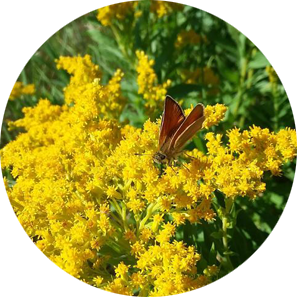
Goldenrod
(Solidago canadensis)
Unfortunately, some noxious weeds can also be seen blooming on this trail. Canada thistle (Cirsium arvense) and bull thistle (Cirsium vulgare), pictured left, are attracting pollinators with their showy purple flowers. Each of these flowers will produce numerous tiny seeds with feathery hairs, much like a dandelion, that are easily dispersed by wind. A bull thistle can produce up to 4,000 seeds.
Late summer also brings ripe strawberries, buffaloberries, currants, and raspberries along this trail. It's always exciting to stumble upon edible berries while hiking, but other animals might be enjoying them as well. Grizzly and black bears are known to hang around Odell Creek, and this time of year they may be foraging on these berries. You may see bear tracks and scat on the trail. Moose and elk also often leave their tracks behind as they travel up and down the creek.
We like to stop and picnic at the junction with Spring Creek Canyon, about 2.5 miles down the trail from where we usually start. But really, you can’t go wrong with Odell Creek, no matter where you decide to stop.
Check out more pictures and videos from Odell Creek, and our other trail talks, on our Instagram page @uofutaftnicholsoncenter. Happy trails!

Know Your Noxious Weeds
Noxious weeds are introduced plant species that spread quickly through new ecosystems. They can out-compete native plants and are detrimental to native ecosystems if left unchecked. Some noxious weeds found in Centennial Valley include:
- Canada, Musk, and Bull Thistles
- Spotted Knapweed
- Cheatgrass
- Houndstongue
- Henbane
You can help contain noxious weeds bylearning about them, and checking your shoes and vehicles for hitchiking seeds. Do you know what noxious weeds are found in your area?
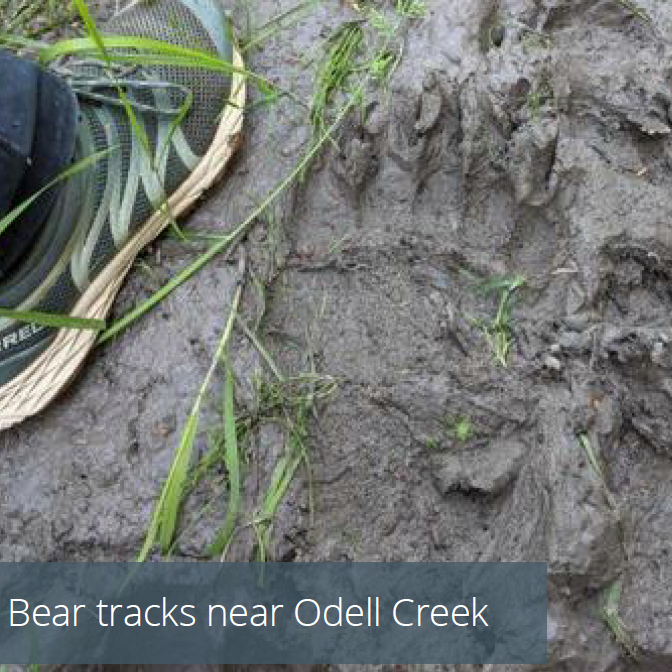
Be Bear Aware
In late summer and through the fall, bears undergo a phase known as hyperphagia. This means they are eating as much as possible to stock up on calories to survive 5 months of hibernation. During this phase, while bears are focusing on foraging, bear encounters are more likely. Here are some tips for recreating in Grizzly country:
-
Stay alert and be aware of signs of bear activity, such as tracks or scat
-
Travel in groups, and make noise
-
Always carry bear spray
-
If you encounter a bear, do not run
-
Deploy bear spray if a bear approaches within 30 feet of you
Being bear aware can prevent negative bear encounters. To learn more, check out this Bear Awareness Training video by the Montana Bear Education Working Group.

